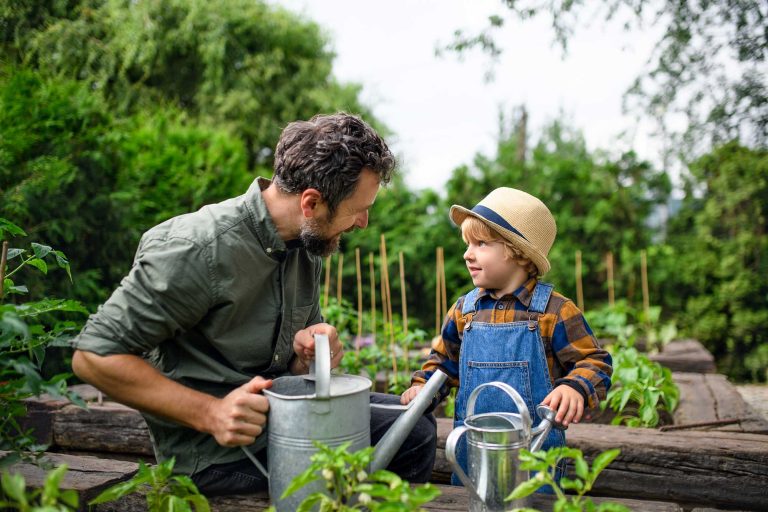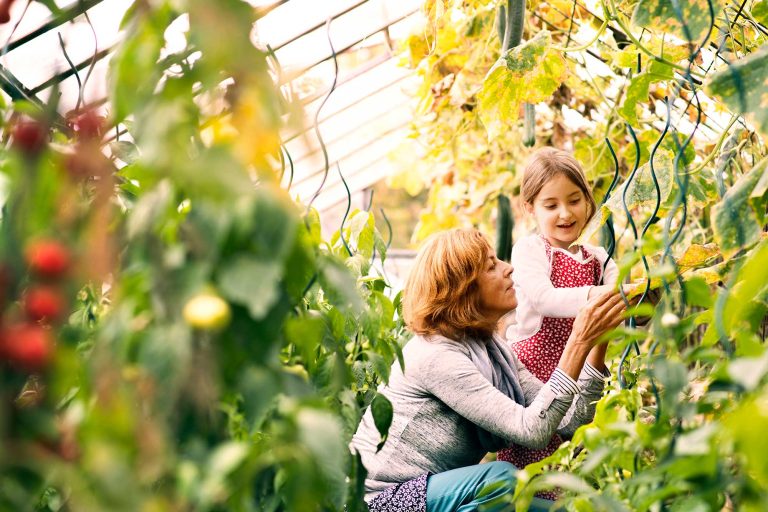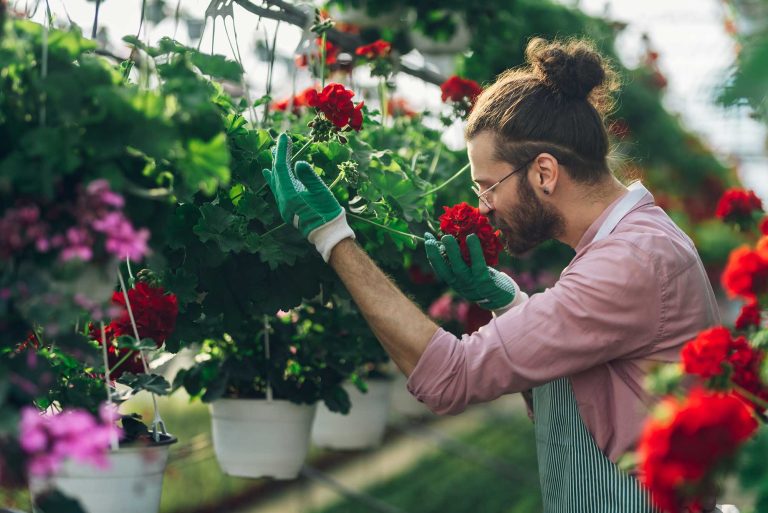Imagine stepping into your backyard and being greeted by a lush, vibrant garden. It’s a peaceful retreat that not only enhances your home but also boosts your mood and well-being.
Creating this oasis might seem daunting, but with the right tools, your dream garden is within reach. Are you ready to transform your outdoor space into a personal paradise? Discover the essential tools you need to make it happen. This guide will simplify the process, saving you time and effort, and ensuring your gardening experience is enjoyable and rewarding.
Let’s dive into the must-have tools that will turn your gardening vision into reality. Don’t miss out on the secrets to cultivating a thriving garden that will be the envy of your neighborhood!
Planning Your Garden Space
Planning Your Garden Space Gather essential tools like a shovel, rake, and trowel for building your garden. Pruners and a watering can help maintain plant health. A wheelbarrow makes transporting soil and plants easier.
Planning your garden space is a crucial first step. It sets the foundation for a thriving garden. A well-thought-out plan helps you maximize space and resources. It ensures you select suitable plants for your environment. Start by evaluating the available area and choosing plants that will flourish. Here’s how to get started:Assessing Available Area
Determine how much space you have. Measure the dimensions of your garden area. Consider sunlight, shade, and wind exposure. Check for any slopes or drainage issues. Note existing structures or trees that might affect your garden. This information helps you make informed decisions.Choosing The Right Plants
Select plants that suit your climate and soil. Some plants need more sun, others prefer shade. Consider the plant’s mature size and growth habits. Think about color, texture, and seasonal interest. Choose a mix of perennials and annuals. Ensure you have a balance of foliage and flowers. This variety keeps your garden vibrant year-round.)
Credit: www.homedepot.com
Basic Gardening Tools
Embarking on the journey of building a garden is exciting and rewarding. As you prepare for this adventure, having the right tools can make all the difference. Basic gardening tools are essential for handling common tasks such as digging, planting, and maintaining your garden. These tools will become your trusted companions as you nurture your green space.
Shovels And Spades
Shovels and spades are indispensable in any gardener’s toolkit. A sturdy shovel helps you dig holes for planting and move soil or mulch with ease. Its rounded blade is perfect for scooping and transporting soil. A spade, on the other hand, has a flat, sharp blade that is ideal for cutting through roots and edging beds. Choosing the right size and weight is crucial for comfort and efficiency. Have you ever found yourself struggling with a shovel that’s too heavy or a spade that’s too small? Picking tools that match your strength and the job at hand can save you time and energy.
Rakes And Hoes
Rakes and hoes play a vital role in preparing and maintaining your garden beds. A rake is excellent for smoothing soil and removing debris, while a hoe is perfect for weeding and aerating the soil. The versatility of these tools means they can adapt to various tasks throughout the year. Consider a rake with adjustable tines for flexibility in tight spaces or a hoe with a sturdy handle for leverage while breaking up tough soil. Have you ever wondered how to keep weeds at bay without spending hours on your knees? The right hoe can be your best ally in keeping your garden weed-free.
Advanced Equipment
Building a garden requires essential tools like a sturdy shovel, reliable trowel, and handy pruning shears. A wheelbarrow helps transport soil and plants efficiently. Gloves protect hands while ensuring a comfortable gardening experience.
Diving into the world of gardening can be thrilling, especially when you have the right tools. Beyond the basics, investing in advanced equipment can significantly enhance your gardening experience. These tools not only save time but also enable you to tackle more ambitious projects. Whether you’re expanding a large garden or nurturing unique plants, having the right equipment can make all the difference. Let’s explore some advanced tools that can elevate your gardening game.Power Tools For Large Gardens
Large gardens often present challenges that require more than just hand tools. Power tools like tillers can effortlessly break up compact soil, preparing it for planting. This is particularly helpful if you have clay-heavy soil that resists manual digging. Lawn mowers equipped with mulching capabilities can turn grass clippings into natural fertilizers, enriching your garden beds. Consider investing in a good quality hedge trimmer to maintain neat borders without the hassle. Do you dread the back-breaking work of removing weeds? A weed eater can make this task quick and easy, keeping your garden pristine with minimal effort.Specialized Tools For Unique Plants
Growing unique plants often requires specialized care. Orchids, for example, thrive when their roots are exposed to air, so consider using breathable pots or baskets. A moisture meter can be a lifesaver when tending to plants with specific watering needs. It ensures you’re not over or under-watering, which can be a common pitfall for exotic flora. Are you growing a vertical garden or succulents? You might need special planting trays that offer the right drainage and support. These tools ensure each plant gets exactly what it needs to flourish. Choosing the right equipment not only simplifies your gardening tasks but also enhances the health and beauty of your garden. What advanced tools have you found indispensable in your gardening journey?Soil And Fertilizer Needs
Creating a thriving garden starts with understanding soil and fertilizer needs. Soil quality and the right fertilizers are essential for healthy plants. They provide the nutrients plants need to grow strong and vibrant. Let’s explore the tools and tips you need for perfect soil and fertilizer management.
Testing Soil Quality
Before planting, check your soil’s health. This step ensures your plants receive the right nutrients. Use a soil test kit to measure pH levels and nutrient content. These kits are available at garden centers. Follow the instructions for accurate results.
Knowing your soil type helps choose the right plants. Sandy soil drains quickly, while clay soil holds water. Each type requires different care. Adjust your gardening approach based on your soil’s characteristics.
Selecting Suitable Fertilizers
Fertilizers boost plant growth by adding essential nutrients. Choose a fertilizer based on your soil test results. Common types include organic and synthetic options. Organic fertilizers improve soil structure and add nutrients naturally. They are made from plant or animal materials.
Synthetic fertilizers provide a quick nutrient boost. They contain concentrated nutrients in precise amounts. Always read the label for correct application rates. Over-fertilizing can harm your plants.
- Compost: Enhances soil health and provides nutrients.
- Manure: Enriches soil with organic matter.
- Granular Fertilizers: Easy to apply and long-lasting.
- Liquid Fertilizers: Fast-acting and absorbed quickly by plants.
Select the right fertilizer to meet your garden’s needs. Proper soil and fertilizer management leads to a flourishing garden. Happy gardening!
Watering Essentials
Creating a garden requires essential tools like a watering can, hose, and spray nozzle. These tools ensure plants receive adequate moisture. A good hose keeps water flowing smoothly, while nozzles help control the spray pattern for efficient watering.
Watering is vital for a thriving garden. Plants need regular hydration to grow. Choosing the right watering tools is crucial. It ensures your plants receive adequate moisture. Below, discover essential tools for watering your garden efficiently.Irrigation Systems
Irrigation systems save time and effort. They provide consistent water delivery. Drip irrigation is popular for gardens. It delivers water directly to roots. This reduces water waste and promotes healthy growth. Sprinkler systems cover larger areas. They are ideal for lawns and flower beds. Choose an irrigation system that suits your garden size.Water Conservation Tips
Conserving water benefits your garden and the environment. Mulching helps retain soil moisture. It reduces the need for frequent watering. Watering early in the morning minimizes evaporation. Use rain barrels to collect rainwater. This offers a sustainable water source for your garden. Regularly check for leaks in your irrigation system. Fixing leaks prevents unnecessary water loss.
Credit: www.homedepot.com
Protective Gear
Protective gear is essential when building a garden. Gloves, safety goggles, and sturdy boots prevent injuries from tools and plants. A hat and sunscreen protect against sun exposure while working outdoors.
Protective gear is essential for safe gardening. It shields you from potential hazards. Without it, you risk cuts, sunburn, and insect bites. Each piece of protective gear serves a unique purpose. Let’s explore some of the key items.Gloves And Safety Wear
Gloves are crucial for any gardener. They protect your hands from thorns and rough surfaces. Choose gloves made from durable materials. Leather or thick fabric works best. Ensure they fit well to avoid slipping. Safety wear includes sturdy shoes. Closed-toe shoes prevent injuries from sharp tools. Goggles can also be useful. They protect your eyes from debris while working.Sun Protection
Gardening exposes you to the sun for long periods. Sun protection is vital to prevent skin damage. Wear a wide-brimmed hat to shield your face. Sunglasses protect your eyes from harmful rays. Use a high SPF sunscreen on exposed skin. Reapply every two hours for effective protection. Long-sleeved shirts and pants offer added defense. Choose light colors to stay cool in the sun.Garden Maintenance Tools
Building a garden requires essential tools like shovels, rakes, and pruners. These help prepare the soil and maintain plant health. A watering can or hose ensures plants receive adequate moisture.
Maintaining a garden is not just about planting; it’s about nurturing your plants to keep them healthy and flourishing. The right garden maintenance tools are essential for this ongoing care. Whether you’re trimming branches, pulling weeds, or ensuring your soil is just right, having the right tools can make all the difference. Your garden is an extension of your home, and its upkeep reflects your commitment to your living space. Here’s a look at some essential tools that can help you maintain your garden with ease.Pruning Shears
Pruning shears are indispensable for any gardener. They help you trim dead or overgrown branches, ensuring your plants remain healthy and aesthetically pleasing. A quality pair of pruning shears will have sharp, durable blades that make clean cuts, reducing the risk of plant disease. Look for ergonomic handles to minimize hand fatigue, especially if you have a larger garden. Imagine walking through your garden, shears in hand, and shaping your plants to perfection. It’s a gratifying experience that enhances the beauty of your outdoor space.Weed Control Equipment
Weeds can be a gardener’s worst enemy. They compete with your plants for nutrients, water, and sunlight, which can stunt growth. Having effective weed control equipment can save you time and effort. You might consider tools like a hoe for larger areas or a hand weeder for precision work in tighter spaces. Some gardeners swear by mulching as a natural method to prevent weed growth. Ask yourself, are you spending more time battling weeds than enjoying your garden? The right equipment could be your solution to a more harmonious gardening experience. Investing in these tools not only makes gardening easier but also more enjoyable. With them, you can focus more on the joy of gardening rather than the labor.
Credit: www.burgonandball.com
Frequently Asked Questions
What Are Essential Garden Tools?
Essential garden tools include a shovel, rake, hoe, and pruners. These tools help with digging, planting, and maintaining your garden. A wheelbarrow is useful for moving soil and plants. A watering can or hose is necessary for hydration. Gloves protect your hands from thorns and dirt.
Do I Need Power Tools For Gardening?
Power tools can make gardening easier but aren’t essential. A lawn mower helps with grass maintenance. A rototiller assists in soil preparation. Electric pruners can save time. Cordless trimmers are handy for hedges. For small gardens, manual tools often suffice, reducing expense and complexity.
How Do I Choose A Garden Shovel?
Choose a garden shovel based on your needs. A round-point shovel is versatile for digging. A square-point shovel is ideal for moving materials. Consider the handle length for comfort. Ensure the grip is ergonomic. For durability, opt for a shovel made of high-quality materials.
Are Gloves Necessary For Gardening?
Gloves are necessary to protect your hands from thorns, sharp objects, and dirt. They provide grip for handling tools. Gloves prevent blisters from repetitive actions. Choose gloves that fit well and are durable. Waterproof gloves are beneficial for wet conditions.
Comfort and protection are key.
Conclusion
Building a garden requires specific tools. Shovels, rakes, and hoes are essential. Gloves protect your hands while you work. A watering can or hose keeps plants hydrated. Pruners help maintain plant health. Wheelbarrows make moving soil easier. Selecting the right tools makes gardening enjoyable.
Start with basic tools, then expand. Your garden will flourish with proper care. Enjoy your new outdoor space. Happy gardening!







